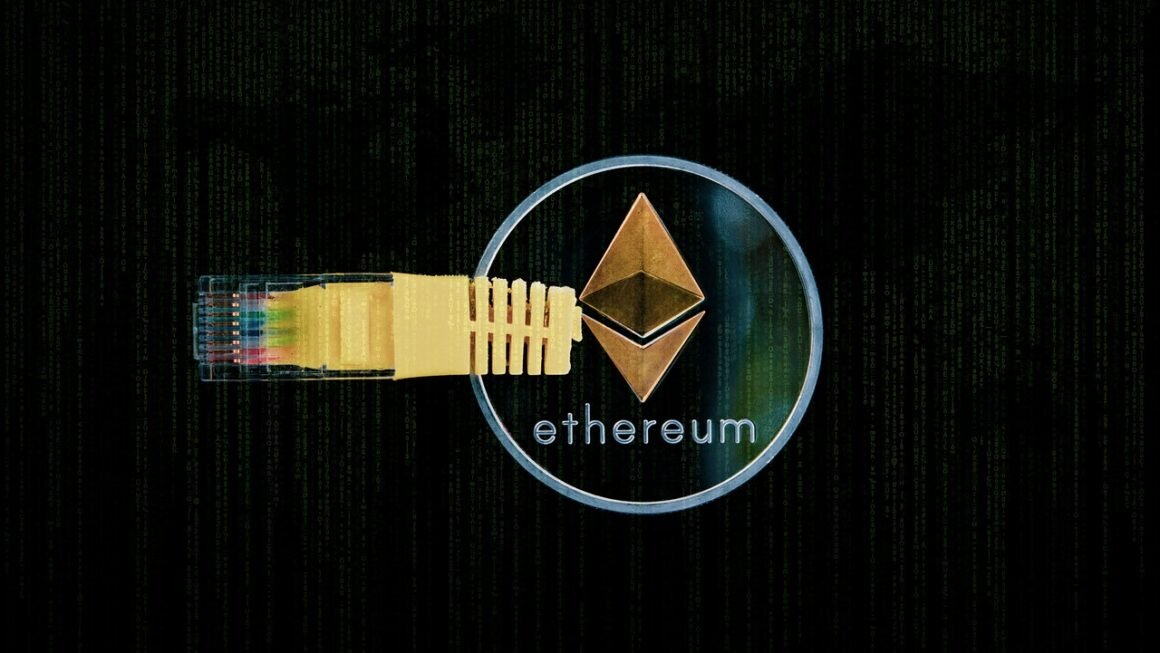Airdrops: The world of cryptocurrency can seem daunting, but amidst the complexities of blockchain and decentralized finance, opportunities abound for both seasoned investors and newcomers alike. One such opportunity is the cryptocurrency airdrop, a marketing strategy that rewards users with free tokens or coins. But what exactly is an airdrop, and how can you participate safely and effectively? This comprehensive guide dives deep into the world of airdrops, providing you with everything you need to know to navigate this exciting aspect of the crypto space.
What is a Cryptocurrency Airdrop?
Definition and Purpose
A cryptocurrency airdrop is the distribution of a cryptocurrency token or coin, usually for free, to numerous wallet addresses. Airdrops are primarily implemented as a way of gaining attention and new followers, resulting in a larger user base and a wider disbursement of coin. They act as a marketing strategy.
- Marketing: Airdrops create awareness and generate buzz around a new cryptocurrency project.
- Community Building: They incentivize users to join communities and engage with the project.
- Token Distribution: They distribute tokens more widely to increase decentralization.
- Rewarding Early Adopters: They recognize and reward users who supported the project early on.
Types of Airdrops
Airdrops come in various forms, each with its own requirements and benefits:
- Bounty Airdrops: Require users to complete certain tasks, such as following the project on social media, joining a Telegram group, or creating content.
- Holder Airdrops: Reward users for holding a specific cryptocurrency in their wallets. The more you hold, the more you receive.
- Referral Airdrops: Give users additional tokens for referring new users to the project.
- Exclusive Airdrops: Reserved for members of a specific community or holders of a particular NFT.
- Hard Fork Airdrops: Occur when a blockchain splits, creating a new cryptocurrency. Existing holders of the original coin receive an equivalent amount of the new coin.
Examples of Successful Airdrops
Several notable airdrops have gained significant traction and provided substantial value to participants:
- Uniswap (UNI): One of the most famous airdrops in DeFi history, Uniswap distributed 400 UNI tokens to anyone who had used the platform before a specific date. At its peak, this was worth thousands of dollars.
- Ethereum Name Service (ENS): Users who held .eth domains were eligible for an ENS token airdrop. This airdrop further decentralized the ENS governance and rewarded early adopters.
- Optimism (OP): The Layer 2 scaling solution Optimism airdropped its OP token to early users of the network, rewarding participation and fostering community growth.
How to Find and Participate in Airdrops
Airdrop Aggregators and Platforms
Several websites and platforms aggregate information about ongoing and upcoming airdrops, making it easier to discover opportunities:
- Airdrop Alert: One of the oldest and most established airdrop trackers.
- CoinMarketCap: Lists upcoming and ongoing airdrops, along with their requirements.
- Airdrops.io: Provides a curated list of airdrops with detailed information.
- Various Crypto Forums and Social Media: Stay informed by following crypto influencers, projects, and communities on platforms like Twitter, Telegram, and Discord.
Steps to Participate
Participating in airdrops typically involves these steps:
- Research the Project: Before participating, thoroughly research the project behind the airdrop. Look for a legitimate whitepaper, active team, and a clear roadmap.
- Create a Cryptocurrency Wallet: You’ll need a compatible wallet to receive the airdropped tokens. Popular options include MetaMask, Trust Wallet, and Ledger (for hardware wallets).
- Complete the Required Tasks: Follow the instructions for the specific airdrop, which may include following social media accounts, joining Telegram groups, or filling out forms.
- Submit Your Wallet Address: Provide your wallet address to receive the tokens. Double-check the address to ensure accuracy.
- Be Patient: Airdrops can take time to distribute tokens, so be patient and wait for the tokens to appear in your wallet.
Example Participation Scenario
Let’s say you find an airdrop for a new DeFi project called “Nova Finance.” The requirements are to:
- Follow Nova Finance on Twitter.
- Retweet their announcement post.
- Join their Telegram group.
- Fill out a Google Form with your Twitter handle, Telegram username, and Ethereum wallet address.
After completing these steps, you submit the form and wait for the tokens to be distributed. You can check the project’s Telegram group or Twitter feed for updates on the distribution timeline.
Security and Avoiding Scams
Identifying Airdrop Scams
The crypto space is rife with scams, and airdrops are no exception. Be cautious and watch out for these red flags:
- Requests for Private Keys: Legitimate airdrops will never ask for your private keys or seed phrases. Giving these away will compromise your wallet and result in the loss of your funds.
- Suspicious Websites: Be wary of websites that look unprofessional or have poor security (no HTTPS).
- High Transaction Fees: Some airdrops may require you to pay a small fee to claim your tokens. However, excessively high fees are a red flag.
- Fake Social Media Accounts: Scammers often create fake social media accounts that impersonate legitimate projects. Double-check the account’s authenticity before interacting.
- Too Good to Be True: If an airdrop promises an unrealistically high reward, it’s likely a scam.
Best Security Practices
To protect yourself from airdrop scams, follow these best practices:
- Use a Separate Wallet: Create a new wallet specifically for participating in airdrops. This will minimize the risk of compromising your main wallet if you encounter a scam.
- Never Share Your Private Keys: Keep your private keys and seed phrases safe and never share them with anyone.
- Verify Information: Always verify information from multiple sources before participating in an airdrop. Check the project’s official website and social media accounts.
- Use a VPN: Consider using a VPN to protect your IP address and online activity.
- Stay Informed: Keep up-to-date with the latest scam tactics and security best practices in the crypto space.
Legal and Tax Implications
Regulatory Landscape
The regulatory landscape surrounding cryptocurrencies and airdrops is still evolving. In some jurisdictions, airdropped tokens may be considered taxable income.
- Varying Regulations: Different countries have different regulations regarding cryptocurrency taxation.
- Increased Scrutiny: Regulators are increasingly scrutinizing airdrops and other forms of crypto distribution.
Tax Implications
In many jurisdictions, airdropped tokens are considered taxable income at the fair market value when you receive them. You may also be subject to capital gains tax when you sell or trade the tokens.
- Income Tax: The value of the airdropped tokens may be considered income and subject to income tax.
- Capital Gains Tax: When you sell or trade the tokens, you may be subject to capital gains tax on any profits you make.
- Record Keeping: Keep accurate records of all airdrops you receive, including the date, value, and any associated transactions.
Disclaimer: I am not a financial advisor. Consult with a tax professional to understand the specific tax implications of airdrops in your jurisdiction.
Advanced Airdrop Strategies
Staking and Locking Tokens
Some airdrops require users to stake or lock their tokens for a certain period to be eligible for the distribution. This helps projects secure their network and incentivize long-term holding.
- Staking Rewards: You earn staking rewards in addition to the airdropped tokens.
- Locking Periods: Tokens are locked for a specified period, during which you cannot access or trade them.
- Project Support: Staking and locking contribute to the stability and security of the project.
Participating in Testnets
Participating in testnets (test networks) is another way to earn airdrops. Testnets are used by developers to test new features and functionalities before deploying them on the mainnet.
- Bug Bounties: You may be rewarded for finding and reporting bugs in the testnet.
- Early Access: Testnet participants often receive early access to new features and functionalities.
- Contribution Rewards: You may earn airdrops for contributing to the testnet, such as providing feedback or creating content.
Utilizing DeFi Platforms
DeFi (Decentralized Finance) platforms often airdrop tokens to users who interact with their protocols. This encourages adoption and rewards early users.
- Liquidity Provision: Providing liquidity to DeFi pools may make you eligible for airdrops.
- Trading Activity: Trading on DeFi exchanges may also qualify you for airdrops.
- Governance Participation: Participating in governance votes may reward you with additional tokens.
Conclusion
Airdrops can be a lucrative way to acquire cryptocurrency and participate in new projects. However, it’s crucial to approach them with caution and awareness. By understanding the different types of airdrops, following security best practices, and staying informed about the legal and tax implications, you can navigate the world of airdrops safely and effectively. Remember to always do your own research, never share your private keys, and be wary of scams. With the right approach, you can potentially benefit from airdrops and contribute to the growth of the cryptocurrency ecosystem.



